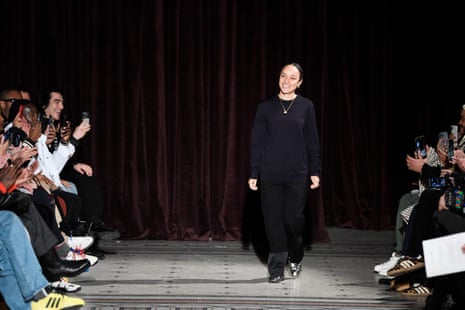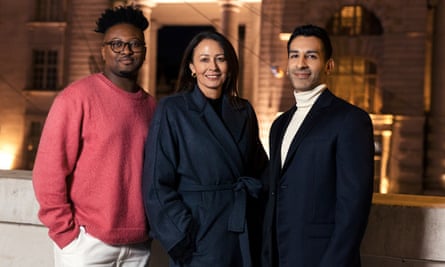Visits: 30

Is a lack of diversity holding back the fashion industry?
Catwalks may be more diverse than a few years ago, but what about the boardrooms? A new report says fashion brands would do better business if they were more inclusive
The top jobs in the British fashion industry are still overwhelmingly held by white men, according to a new report. While that might feel like old news, the business case for making workforces better reflect society is perhaps less regularly made.
The inaugural Fashion Diversity, Equality and Inclusion (DEI) report, released today, finds that only 9% of executive and 11% of so-called power roles, which include chief executive, chief financial officer, chair and creative director positions, are held by people of colour. 39% of executive teams and 24% of power posts are occupied by women.
Across industries, a diverse workforce, it points out, “improves decision-making up to 87% of the time – the result of expanded perspectives”, which, in turn, “feeds through to the bottom line”. It finds that diverse businesses are 39% more likely to outperform financially, while improving DEI is important for companies looking to attract talent, with “39% of global job seekers [having] turned down or decided not to pursue jobs because of a perceived lack of inclusion.”
Alongside this, consumers are increasingly choosing to leverage their spending power with companies that they perceive as reflecting their values, with about 50% of millennials saying “it is important or very important to choose brands that have a gender equity stance”.

“The whole point now is to reposition DEI as a business imperative and a lever for profitability and financial success,” says Jamie Gill, founder of the Outsiders Perspective, a not-for-profit incubation platform for people of colour in fashion that co-authored the report. In the current turbulent economic climate, he argues, DEI should not be sidelined. “Having the right people around the table, having those fresh perspectives from all different walks of life is really what we need to look at,” he says.
The report, which is also the work of the British Fashion Council, the (Fashion) Minority Report and McKinsey & Company, lands at a time when diversity in the industry has been under renewed scrutiny, after the announcement of Seán McGirr to replace Sarah Burton as creative director at Alexander McQueen in October. While noone was questioning his talent, but his appointment means all the creative director positions at Kering, the luxury conglomerate that owns McQueen, are held by white men. It also follows a Paris men’s fashion week at which some of the buzziest, most interesting shows were the work of designers Martine Rose and Grace Wales Bonner, both women of colour.
The need for greater diversity and inclusion runs deeper than good commercial sense, but, says Gill, “we haven’t moved the needle in the last three and half years, since the conversation was brought to the world stage … We’ve been saying there’s a need for humanity and that hasn’t landed.”
Also revealed in the report is the dissonance of beliefs around diversity and inclusion in the industry. In illuminating but perhaps unsurprising figures, 86% of white men in the industry believe it to be diverse, while only 46% of women of colour believe the same to be true.
The report highlights that fashion has made some progress in what it calls “outward-looking” contexts, meaning areas such as catwalk representation, but that is less true when it comes to boardrooms and workplaces.
“We really want to highlight and, to a certain extent, celebrate that as a collective the fashion industry has been integral in changing our marketing. Our external space has become very diverse, very representative – catwalks, ad campaigns, events are very inclusive and representative, which is fantastic and shows, in a short space of time, how quickly we were able to accelerate that change when we focused on it.” Now, he says, “We need to look internally because there’s such a disconnect with the workforce and moving it forward.”
To shift the dial, the report stresses the importance of leadership, with the need for company heads to set out diversity ambitions – the research indicates that commitment to action at board level is most likely to deliver change.
Gaping holes in data also need to be filled. “We, as an industry, are not collecting our data,” says Gill. There is, according to the report, a particular lack of data on LGBTQIA+, neurodiversity, socioeconomic background, size, age, religion and gender. Gill sees this report as a call to action “to gather that data around all underrepresented groups”.
“Fashion is a leader. We’re an industry that leads on everything and right now we’re not leading on this,” says Gill.

